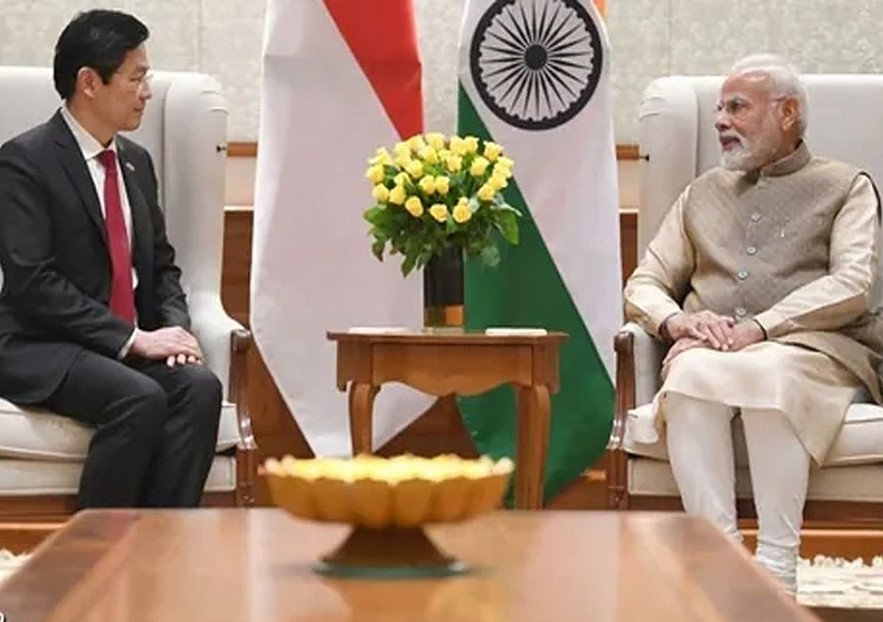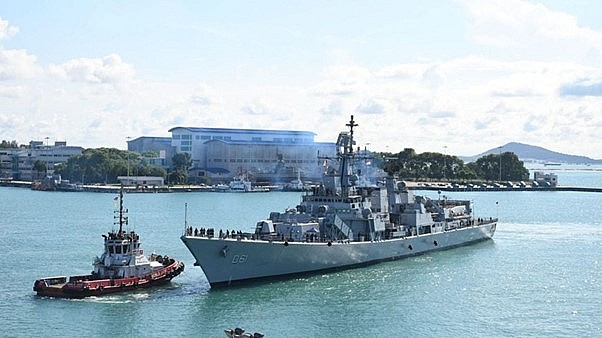
|
India and Singapore share historical ties, and their relationship today spans diverse fields, including both traditional and non-traditional aspects of security. As Prime Minister Modi embarks on a two-day visit to the island nation, it is only natural that discussions will focus on enhancing maritime cooperation with a strong emphasis on security and safety. This visit also aims to strengthen diaspora connections and explore avenues to deepen the bilateral relationship. In anticipation of the trip, the Ministry of External Affairs (MEA) highlighted that the partnership between the two countries is poised to enter a more intense phase, building upon the new anchors of collaboration identified under the India-Singapore Ministerial roundtable framework. Prime Minister Modi’s visit to Singapore on September 4-5 comes at the invitation of Prime Minister Lawrence Wong.
The significance of Singapore for India, and vice versa, was evident from the visit of a high-level Ministerial team to Singapore in late August 2024. This team, comprising the Finance Minister, EAM, Commerce Minister, and Minister for Railways, participated in the Second Bilateral Ministerial Roundtable alongside a high-powered Singaporean delegation. The topics of discussion reflected key focus areas, including digitalization, skills development, sustainability, and healthcare & medicine. Importantly, two new pillars were added to the framework for cooperation: advanced manufacturing and connectivity, further solidifying bilateral cooperation. These issues are now set to dominate Prime Ministerial talks, and any agreements reached are likely to be swiftly implemented.
Prime Minister Modi’s visit to Singapore has been long-awaited, as his previous trip to the island nation occurred during his first term. The Singaporean side has been eagerly anticipating in-depth discussions and the signing of multiple MoUs. As noted by the Secretary (West) of the MEA, Singapore stands as India’s largest trading partner within ASEAN and is a leading source of Foreign Direct Investment (FDI). It is India’s sixth-largest trade partner, and during the last financial year, it was the top source of FDI, totaling US$11.77 billion. In a media briefing ahead of the visit, Secretary (East) Jaideep Mazumdar suggested that the trip would also boost cooperation in the semiconductor sector.
Prime Minister Modi’s recent visits to other countries have been marked by a strong emotional connection with the Indian diaspora, and Singapore will be no different. With nearly 700,000 Indians calling Singapore home, the presence of ‘Little India,’ complete with shops and temples, is a testament to this community’s impact. The story of the Indian diaspora is intertwined with Singapore’s history. When Sir Stamford Raffles established Singapore in 1819, he was accompanied by Indians serving in various roles. Subsequently, Indians arrived as prisoners and later contributed to the construction of buildings and roads for the empire in Singapore.
The India-Singapore relationship has evolved dynamically, and the strategic partnership is underpinned by a shared history and robust people-to-people contacts. Trade and investment, bolstered by strong defense cooperation and cultural exchanges, have laid a solid foundation for exploring new areas of collaboration identified by the India-Singapore Ministerial Roundtable framework. It is worth noting that Prime Minister Lawrence Wong recently assumed office in May 2024, succeeding PM Loong, who led Singapore for two decades. As mentioned by Secretary (East) of the MEA, Prime Minister Modi’s visit comes at an opportune time to set the stage for an even more vibrant phase of bilateral relations.
What makes this visit particularly intriguing is the mutual desire to elevate the relationship beyond traditional areas of cooperation, such as defense and maritime security. Hence, the identification of new bilateral cooperation sectors, including food security, renewables, green hydrogen, and semiconductors, by the Ministerial Roundtable is significant. These fields offer considerable bilateral complementarities, and Singapore presents India with diverse opportunities in value chains, digital technology, and semiconductors. There is potential for high-technology collaboration, which could pave the way for fruitful cooperation in the coming years.

|
A review of maritime cooperation between the two countries reveals Singapore’s consistent support for India’s maritime activities in the South China Sea and beyond, given the strategic importance of the Malacca Straits. Joint naval exercises like the Singapore-India Maritime Bilateral Exercise (SIMBEX) and multilateral initiatives in the Indian Ocean have intensified this collaboration. While SIMBEX initially focused on anti-submarine warfare, it has since expanded to encompass a broader range of naval operations, including maritime interdiction, air defense, and coordinated surface and air combat. Notably, both countries hosted the ASEAN-India maritime exercise last year. A key highlight of bilateral defense cooperation is the agreement allowing the Indian Navy to use Singapore for logistics support, enhancing India’s maritime reach into the South China Sea.
Prime Minister Modi’s visit occurs ahead of significant milestones: the 60th anniversary of diplomatic relations in 2025 and the 10th year of the strategic partnership with Singapore. This trip presents an opportunity to assess the state of bilateral ties and discuss regional security issues, including the situations in the South China Sea and Myanmar. The significance of this visit lies not only in the breadth of cooperation areas but also in the potential for Singapore to offer high technology. ‘Little India’ in Singapore symbolizes the strong cultural bond between the two nations and is poised to take bilateral relations to new heights.
Joint patrols help maintain security in East Sea
Many international maritime routes pass through the East Sea, making it the world’s second-busiest shipping lane in terms of commercial activities, after the Mediterranean. The sea, however, has been threatened with potential instability from frequent piracy, while sovereignty disputes over islands are becoming more complex.







